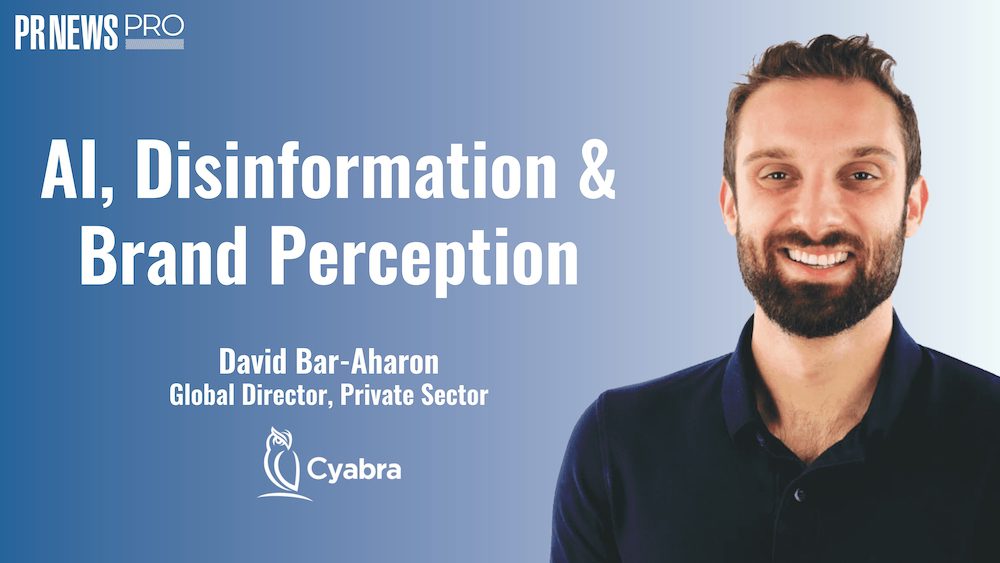
Doing your taxes is a challenging exercise for many. So is marketing it to disinterested consumers.
This tax season, H&R Block has focused on targeting Gen Z—many of whom are first-time filers—through entertainment. “It starts with a strategy around Gen Z. And then from there, we start to look at how we can connect with that audience and meet them where they are, as opposed to interrupting them with ad units and content,” Jill Cress, CMO at H&R Block, told Chief Marketer this week. “Gen Z wants to see brands that are doing something new and unique, and we’re operating in a competitive attention economy. And they really don’t want to be interrupted.”
We spoke with the marketing chief about the brand’s engagement strategy, why it chose a reality TV parody as the campaign’s content format, how it’s being marketed to the public, and her thoughts on competitive differentiation.
Chief Marketer: What’s the inspiration for this particular video campaign?

Jill Cress, Chief Marketing and Experience Officer at H&R Block: It’s important for us understand how to bring our unique brand value proposition to this audience, understand their thoughts and attitudes about money, and how we can help build confidence around what can be a pretty intimidating topic, especially for first-time filers. It starts with a strategy around Gen Z. And then from there we start to look at how we can connect with that audience and meet them where they are, as opposed to interrupting them with ad units and content. Gen Z wants to see brands doing something new and unique, and we’re operating in a competitive attention economy. And they really don’t want to be interrupted. We had an opportunity to work with Piro, an innovative creative shop and production company, as a way to do that–to stop this interruption cycle and create content that audiences actually want to go to and enjoy.
CM: Why did you choose that particular format?
JC: It was fortunate, because we were talking to Piro in the midst of the writers’ strike, and they were working with writers who were able to actually participate and collaborate with brands on content. We started to work through the opportunity statement we assembled in a workshop. We had some really talented television writers in the room and started riffing on what could be possible… and landed on a scripted comedic satire micro-series that brings together everything that we know people love about reality TV and the world of taxes. [We used] strategy and insights to reach an audience in a new way, leveraging satire to disarm what can be an intimidating topic.
As you look at how Gen Z is engaging with content largely across platforms like TikTok, they tend to like content that is both factual and educational, but grounded in a little bit of levity or satire performs well and makes intimidating content more approachable.
CM: Gen Z consumers digest content through an array of platforms, many of them niche. So what’s the distribution strategy for this?
JC: I have a background in traditional tune-in marketing from my time at National Geographic. The strategy was holistic in that we could work to create a great piece of content, but if we didn’t have a 360-degree approach to driving traffic and reaching this audience, we knew that this would not be successful. So distribution and driving awareness and buzz to drive tune-in was really important.
We looked at all of the different touchpoints across H&R Block owned channels, including social, .com and other customer touchpoints that we have, as well as the opportunity to reach this audience on the channels where they consume content. Then we thought about teasing the content out through teasers and trailers, placing those on social, leveraging audio to reach this audience, leveraging our own channels through things like homepage takeovers, and then having both a paid and an organic social strategy–and then working more broadly across audio to promote this on podcasts with post-reads to reach that audience.
That was the tune-in and awareness phase. Then we had to assess where to place the content to drive consumption. Understanding Gen Z’s love of streaming platforms, we made a decision to partner with Roku… and leverage their ad units and banner ads on their homepage… and placing it as a piece of recommended content on their platform. We also know the power of YouTube. And then it’s also streaming on our .com. Then, we are placing snackable versions, through longer-form trailers on platforms like TikTok, to drive that tune-in. It was a highly-integrated pre-launch effort to drive that teaser-like approach, using trailers across different platforms and then hosting it on three different places to maximize the opportunity for the audience to watch it.
CM: Given that H&R Block is a legacy brand, how do you differentiate from competitors in the marketplace? What are the challenges you’re facing?
JC: We are a 70-plus-year-old brand with high levels of awareness and trust. At the same time, [there is an] opportunity of relevance, particularly with this audience. The good news is, we’re 70 years old, we’re trusted, and that actually matters to this audience. And that is a real differentiator for H&R Block. We have a corpus of knowledge on this really challenging topic that’s based on over 935 million returns filed worldwide. We have a long history of helping hardworking Americans achieve the best possible outcome during this moment, which for most Americans is the most financially important moment of the year. More than 75% of Americans get a refund. Our ability to leverage that expertise and care is a big part of our brand promise.
The other thing is, we lean into convenience and the many ways that a consumer can file with H&R Block. You mentioned the competitive space. We have awareness of the way that we started doing taxes, which was through a retail experience. We also have DIY software so that you can choose to either work with a professional in our retail experience, you can work with a professional in a virtual experience, or you can choose to do your taxes yourself.
For this audience in particular, some of them want to look someone in the eye and know that they’ve got an expert on their side to file their taxes for them. Others really believe in their ability to navigate the online system and do their taxes themselves. Our strategy was telling them all the things that we do—the many ways to file—to break that legacy perception: that to work with H&R Block you have to go to a retail location. That is something that is desired by this audience, but many of them want to do it more conveniently.
CM: What are the digital innovations you’re promoting?
JC: We introduced a new product this year called H&B Block AI Tax Assist, a large language model AI functionality within the product… to learn and get access to expert help, as well as connect live with human experts if that’s not getting the job done for you.
We have a robust online experience at hrblock.com. We’ve introduced audience-led journeys this year. Understanding that as we target different audiences and we bring them into the .com experience, how can we streamline them right into the unique tax use cases that they might have? The gig economy is a good example of that. If we are seeking to reach those that are participating in the gig economy with gig-related content to drive awareness and consideration, we then land them into a specific gig flow when they get to .com, which will lead with understanding 1099s and making sure you have all your forms organized.
Similarly, as we post the content on our website, we can then convert them to the DIY product and reinforce some of the messaging and relevant content specific to DIY. We have a My Block app, which is the interface into your relationship with H&R Block, where you can load all your documents, start your return, store your documents and have in one easy place. Our end-to-end client experiences are based on understanding who they are and thinking about how do we message them, how do we reach them across what digital channels, and then how do we pay those experiences off through the journey into .com and our products.
CM: Lastly, what’s the significance of “experience” in your title? Does it refer to experiential marketing?
JC: It refers more to the customer experience—the work that we do to design end-to-end customer journeys and the experience with the brand through to the product. I do also have experiential marketing in my remit, and that has been an area of testing for us. We’ve been activating across the country the last few years. We did a “W2 brew” event last year where we popped up in New York City to drive awareness and pour coffee for people, partnering with La Colombe on a cold day in New York City. We showed up in California during the [tax] extension [period] on National Guacamole Day and did a “tax & taco” activation. And most recently we were down in Louisiana around Mardi Gras with a “family Gras” activation. We’d like to continue to humanize our brand, so we’re testing our way into that.


 Network
Network

